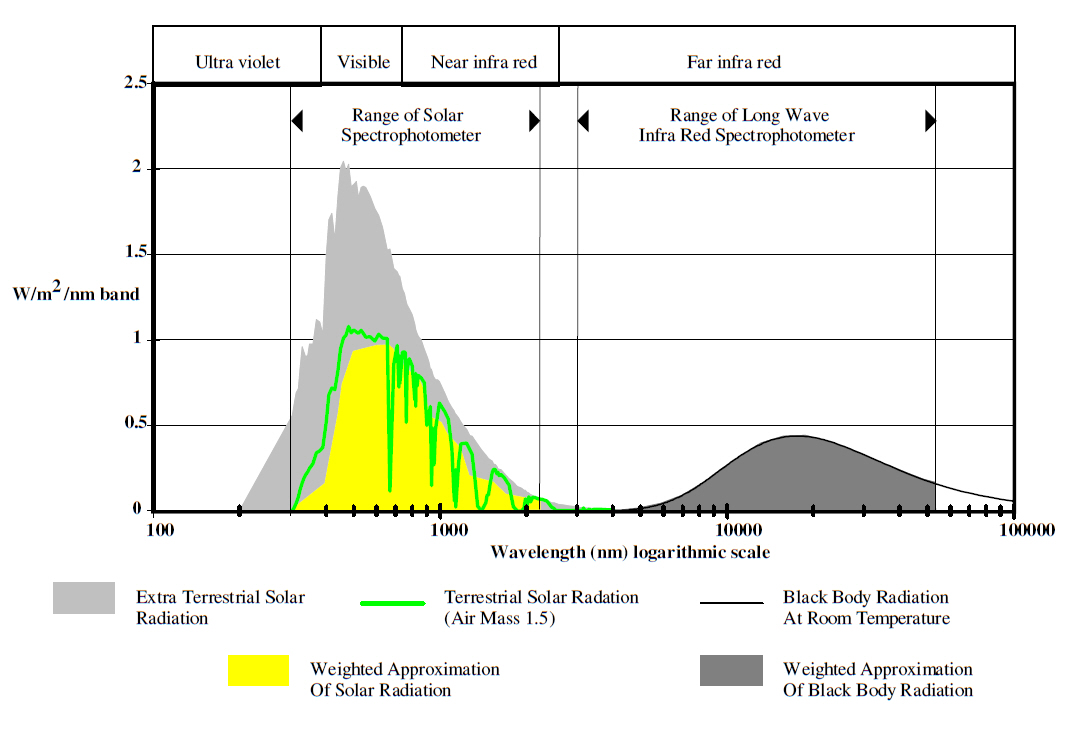Visible light
Visible light (or the visible spectrum) is a form of electromagnetic radiation. The electromagnetic spectrum includes radio waves, microwaves, infrared radiation (IR), visible light, ultraviolet light (UV), X-rays and gamma-rays. Visible light falls within the range of wavelengths from approximately 380 - 740 nanometers (nm), between the infrared and ultraviolet wavebands.
Visible light represents the range of light that is visible to the human eye. Human eyes contain ‘receiver’ cells called 'cones' that can detect wavelengths within this relatively small part of the electromagnetic spectrum.
Visible light comprises a number of colours that are typically categorised as:
- Red (around 650 nm).
- Orange (around 589 nm).
- Yellow (around 570 nm).
- Green (around 510 nm).
- Blue (around 475 nm).
- Indigo (445 nm).
- Violet (around 400 nm).
Combinations of these colours can create other colours. For example, the combination of red light and blue light will create magenta light. The combination of all colours will create white light. The absence of any light from the visible spectrum is perceived as being black.
Typically, when we see a colour, it is as a result of that wavelength of light reflecting from or transmitting through a body towards our eyes, whilst other wavelengths of the visible spectrum are absorbed by the body or reflected away from our eyes.
[edit] Related articles on Designing Buildings
Featured articles and news
Spring Statement 2025 with reactions from industry
Confirming previously announced funding, and welfare changes amid adjusted growth forecast.
Scottish Government responds to Grenfell report
As fund for unsafe cladding assessments is launched.
CLC and BSR process map for HRB approvals
One of the initial outputs of their weekly BSR meetings.
Architects Academy at an insulation manufacturing facility
Programme of technical engagement for aspiring designers.
Building Safety Levy technical consultation response
Details of the planned levy now due in 2026.
Great British Energy install solar on school and NHS sites
200 schools and 200 NHS sites to get solar systems, as first project of the newly formed government initiative.
600 million for 60,000 more skilled construction workers
Announced by Treasury ahead of the Spring Statement.
The restoration of the novelist’s birthplace in Eastwood.
Life Critical Fire Safety External Wall System LCFS EWS
Breaking down what is meant by this now often used term.
PAC report on the Remediation of Dangerous Cladding
Recommendations on workforce, transparency, support, insurance, funding, fraud and mismanagement.
New towns, expanded settlements and housing delivery
Modular inquiry asks if new towns and expanded settlements are an effective means of delivering housing.
Building Engineering Business Survey Q1 2025
Survey shows growth remains flat as skill shortages and volatile pricing persist.
Construction contract awards remain buoyant
Infrastructure up but residential struggles.
Warm Homes Plan and existing energy bill support policies
Breaking down what existing policies are and what they do.
A dynamic brand built for impact stitched into BSRIA’s building fabric.






















